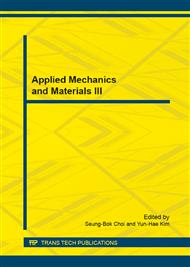p.395
p.400
p.406
p.410
p.419
p.422
p.427
p.431
p.435
Research and Development Display Agent Determination of Nitrite Content in Concrete
Abstract:
The invention relates to building materials field, especially the determination method relates to a concrete root ion content of nitrite. Nitrite as antifreeze in the concrete, early strength agent and rust resistance agent composition is widely used in reinforced concrete structure, the admixture of cement quality generally accounted for 1-3% range, its content is too little and too much will affect the durability and workability of concrete, if insufficient dosage when the early strength, anti-freezing and anti-rust effect is not obvious,otherwise affect the workability and durability,when used as a rust inhibitor and dispersant, insufficient dosage, sometimes, can produce local corrosion and accelerate the macro cell corrosion.Therefore, the determination of nitrite ion content in root of concrete (or mortar) has become the inevitable trend of modern concrete production.
Info:
Periodical:
Pages:
419-421
Citation:
Online since:
January 2015
Authors:
Keywords:
Price:
Сopyright:
© 2015 Trans Tech Publications Ltd. All Rights Reserved
Share:
Citation:


